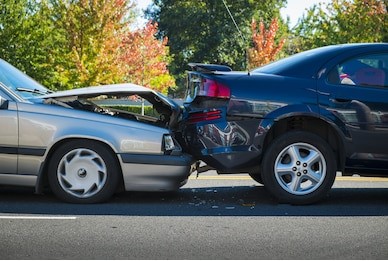- Car Accidents
In Georgia, a car driving recklessly and in tandem with another car can be held liable if the second car gets into a crash under a “joint enterprise” theory of liability. In a recent case, a driver used this theory to sue several defendants for damages as a result of injuries arising from a car crash.
The plaintiff was traveling westbound on the highway. A white van driving over the speed limit ran a stop sign and hit his car. Vijay Shah, the van’s driver, was killed in the crash and the plaintiff was badly hurt. Raju Thapa was driving about 20 feet behind Shah’s van while following him to the gas station.
The plaintiff sued Thapa on a joint enterprise theory based on tandem driving. The theory states that someone driving a vehicle recklessly with another vehicle can be liable for a car crash even when the vehicle is not directly involved in the crash.
In a sworn affidavit, the plaintiff said that he saw the van and the man following him go through the intersection at 60-70 mph, around 10 miles over the speed limit. The plaintiff also said that they ran a stop sign and saw the man’s vehicle go behind him before the van hit his car.
However, at his deposition, the plaintiff contradicted the affidavit. He testified that he saw the white van approaching the intersection at 60 mph, but didn’t see Thapa until after he had already driven behind him. He also testified that he had not actually seen the vehicles run the stop sign.
Thapa, the man following the van testified that he had been following about 20 feet behind the van, driving about 40-45 mph. Thapa also testified that Shah didn’t stop at the stop sign, but that he did try to stop. He testified he wasn’t able to stop in time and coasted through the intersection before pulling over.
An officer that investigated the accident testified that he would have expected to see skid marks from Thapa’s car if he was driving 40-45 mph, 20 feet behind Shah’s van. But there weren’t any skid marks leading to the stop sign.
The defendants filed a motion for summary judgment. The plaintiff relied exclusively on his own (contradictory) testimony in opposition to the motion. Following Georgia rules, the trial court held the favorable portions of the plaintiff’s testimony against him.
The trial court also found there was no evidence of tandem driving because Thapa had gone through the intersection after the crash and there was no evidence that Thapa was the lead driver or that he encouraged Shah to drive recklessly. The judge granted summary judgment.
The plaintiff appealed. On appeal, he argued that his testimony wasn’t contradictory and his testimony was also supported by other evidence. The appellate court explained that testimony is contradictory if some of the testimony expresses the opposite of a different part of the testimony.
In this case, the trial court found that the plaintiff contradicted himself regarding the vehicle speed of the other vehicles and also as to whether they ran the stop sign.
The appellate court, however, noted that these “contradictions” were basically consistent. The plaintiff’s claim regarding the stop sign was supported by other evidence. In determining consistency, the court is supposed to consider the total effect of the testimony not just a few words.
The appellate court found that the deposition testimony gave a fuller account of the accident and offered support for what the plaintiff had testified to in the affidavit. It reversed the lower court explaining that under the joint enterprise theory of liability, cars need only be jointly engaged in driving their vehicles negligently in close proximity while traveling to the same place. Liability for tandem driving did not turn on the defendant leading the cars or even knowing the specific destination.
If you are seriously injured in a car accident, you may have grounds for a lawsuit. Experienced Atlanta personal injury attorney Terrence R. Bethune can evaluate your case and fight for any compensation you may deserve. Contact us at 404-875-7800 or via our online form.





